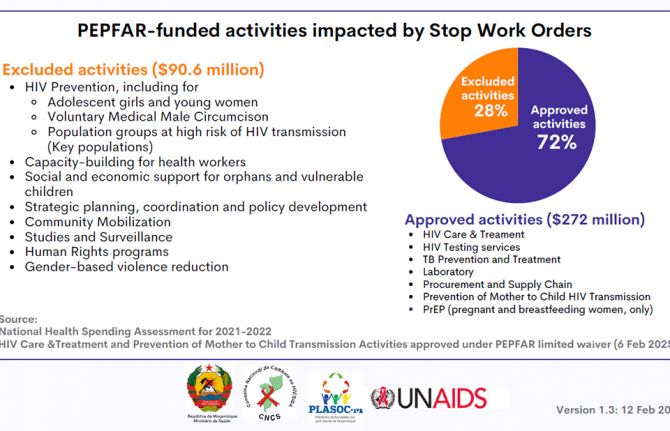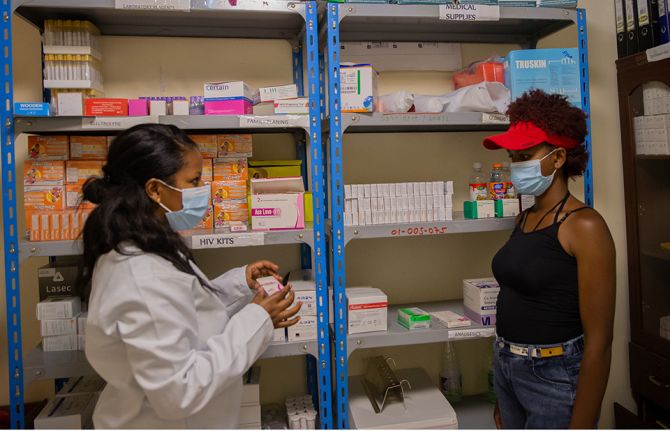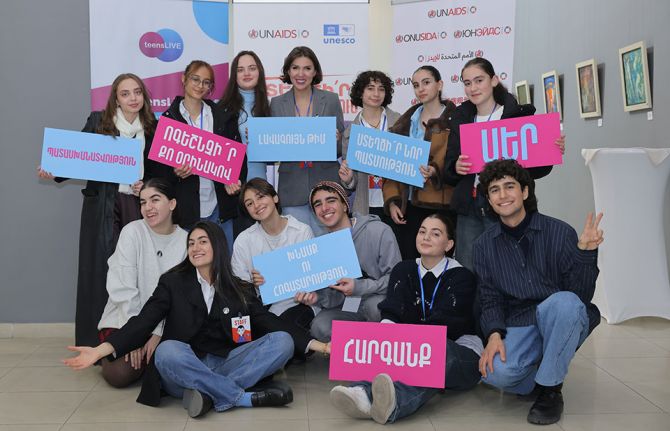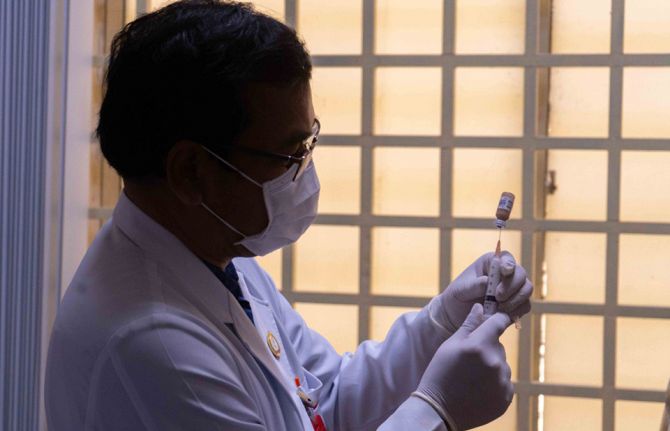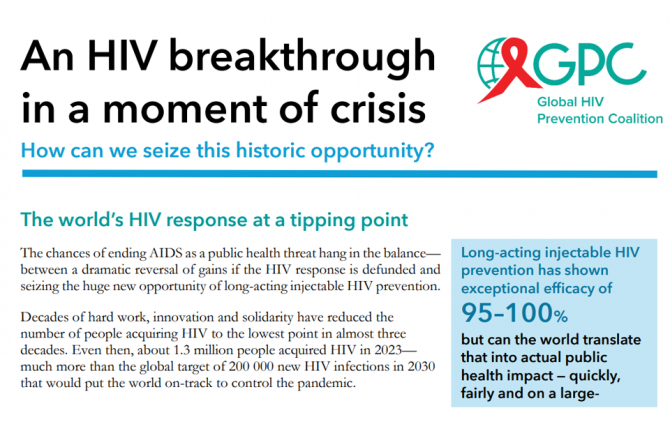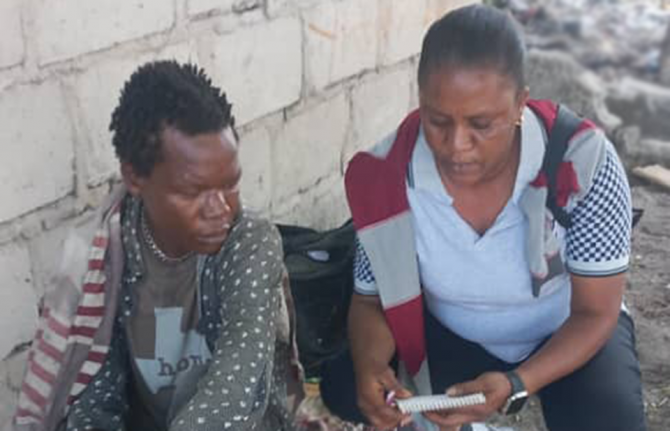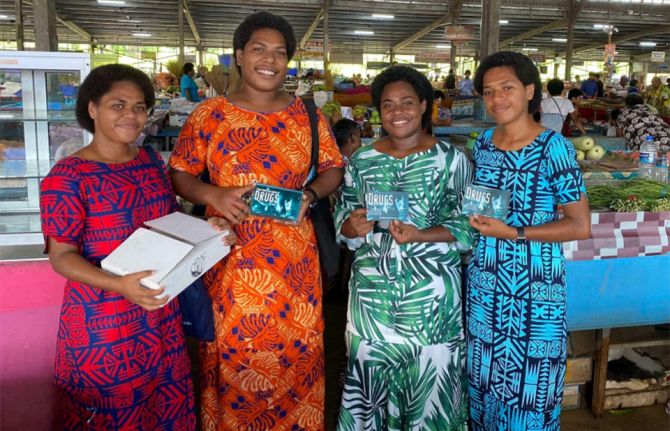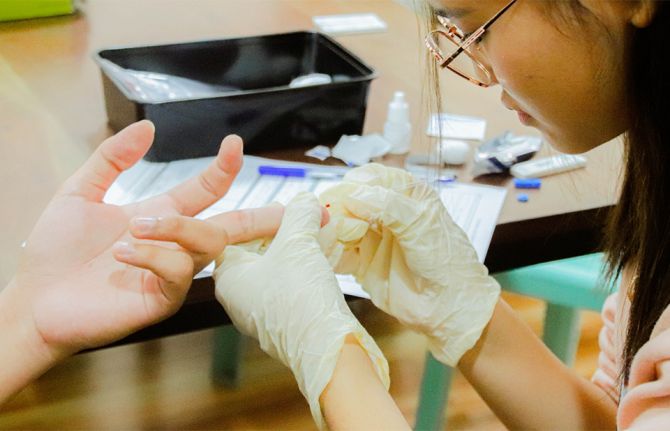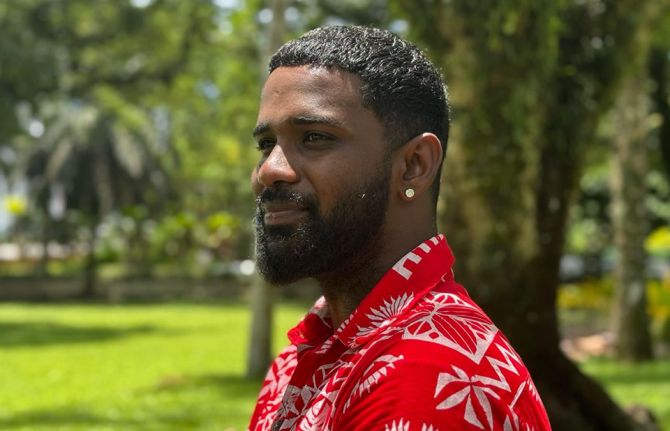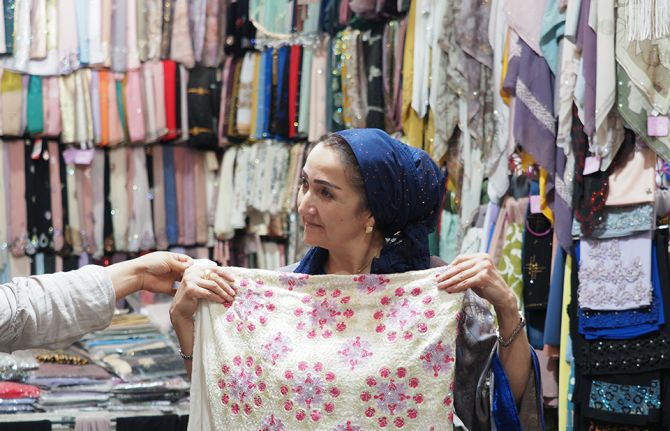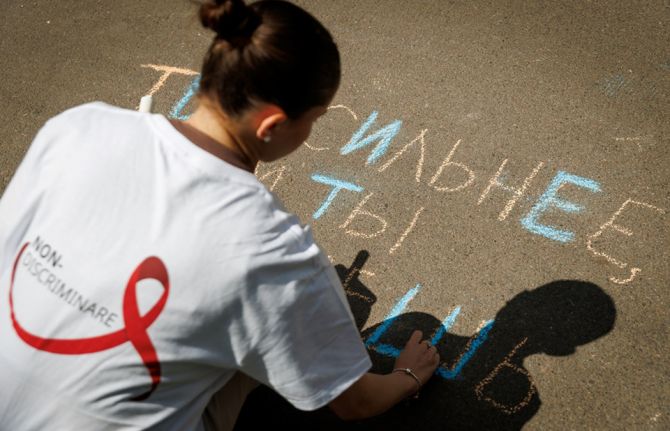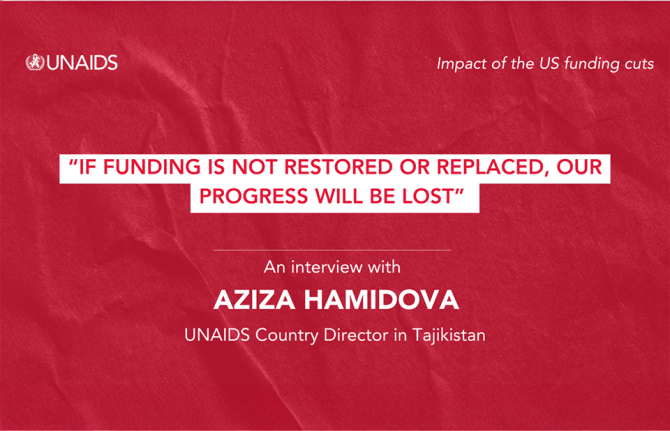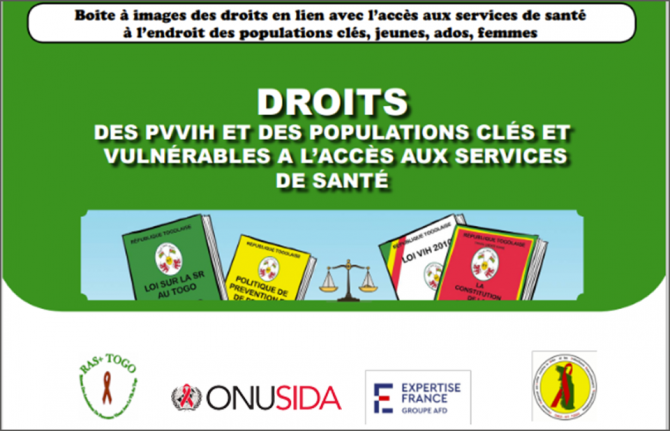

Feature Story
Hands up for #HIVprevention mobilizes support worldwide
05 December 2016
05 December 2016 05 December 2016It started in October with a single message written on one person’s hand: “know your status”. Nine weeks on and thousands of people from all over the world have demonstrated their support for UNAIDS’ “Hands up for #HIVprevention” campaign by sharing photos and videos expressing what HIV prevention means to them. Through a range of content, the campaign highlighted different aspects of HIV prevention week by week and showed how they relate to different groups of people, including adolescent girls and young women, key populations and people living with HIV.
The campaign reached more than 2 million people on Facebook and 64 000 people have engaged through likes, shares and comments. On Twitter, the campaign reached almost 3 million people and UNAIDS campaign tweets were retweeted 12 000 times and liked 9500 times.
Messages that people wrote on their hands and held up for the world to see as part of the campaign include “Use condoms always”, “Provide support”, “End stigma”, “Invest”, “PrEP”, “No violence” and “Gender equality.”
Prominent contributors included the First Lady of Benin, Claudine Talon, the First Lady of China, Peng Liyuan, the First Lady of Guinea-Bissau, Hadja Djene Kaba Condé, the First Lady of Panama, Lorena Castillo de Varella, and Tobeka Madiba Zuma, First Lady of South Africa.
UNAIDS International Goodwill Ambassador Michael Ballack also supported the campaign, with a message in support of zero discrimination. He was joined by James Chau, UNAIDS Goodwill Ambassador for China, Vera Brezhneva, UNAIDS Goodwill Ambassador for Eastern Europe and Central Asia, and Alejandra Oraa, UNAIDS Regional Goodwill Ambassador for Latin America and the Caribbean. The young television star Jenna Ortega provided a powerful and personal message about why HIV prevention was important to her. Princess Tessy of Luxembourg, UNAIDS Global Advocate for Young Women and Adolescent Girls, joined the campaign in the week highlighting women’s empowerment.
UNAIDS partners such as the United Nations Educational, Scientific and Cultural Organization, the United Nations Office on Drugs and Crime, the Global Fund to Fight AIDS, Tuberculosis and Malaria, the President’s Emergency Fund for AIDS relief and mothers2mothers also joined in, offering powerful content and testimonies from people all over the world that showed how innovative programmes are reaching the people most in need of HIV prevention methods.
The campaign followed the launch of the UNAIDS Prevention gap report earlier this year, which showed that an estimated 1.9 million adults have become infected with HIV every year for the past five years and that the number of new HIV infections is rising in some regions. The report shows that HIV prevention efforts must be reinvigorated if the world is to stay on the Fast-Track to ending the AIDS epidemic by 2030.
The campaign culminated in a call for increased investment in HIV prevention strategies targeted at the people and places most in need of them. The commitment made in the 2016 Political Declaration on Ending AIDS is to ensure that financial resources for HIV prevention are adequate and constitute no less than a quarter of AIDS spending globally.
The World AIDS Day Facebook page remains open for new contributions. UNAIDS thanks everyone who has already participated.
Get the message out: AIDS is not over, but it can be.
Hands up for #HIVprevention — World AIDS Day campaign
Related

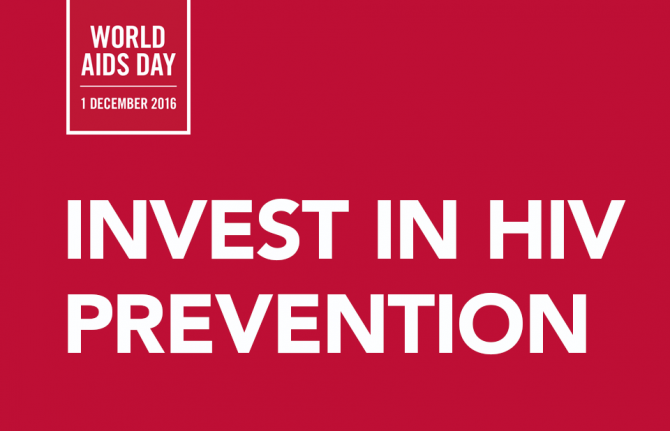
Update
Investment in effective prevention
28 November 2016
28 November 2016 28 November 2016Strengthened global political commitment to HIV prevention must be followed by strengthened financial commitment. The successes of the global AIDS response to date have been fuelled by extraordinary investment. The total amount of financial resources for AIDS responses in low- and middle-income countries reached an estimated US$ 19 billion in 2015, double the amount of resources available in 2006. However, international funding for in-country services in 2015 declined for the second year in a row to US$ 8.2 billion—a 7% reduction from the US$ 8.7 billion in 2014. Public and private domestic investment increased by US$ 0.4 billion over the same period, resulting in approximately similar total resource availability in 2014 and 2015.
Available data show that investments in HIV prevention have slightly increased over time in a number of countries. However, more rapid increases in expenditures for HIV treatment translate to a declining trend in the percentage of total resources dedicated for a wide range of prevention services, including the prevention of mother-to-child transmission, reaching about 20% in recent years—short of the commitment made within the 2016 Political Declaration on HIV and AIDS to ensure that financial resources for HIV prevention are adequate and constitute no less than a quarter of AIDS spending globally.
Hands up for #HIVprevention — World AIDS Day campaign

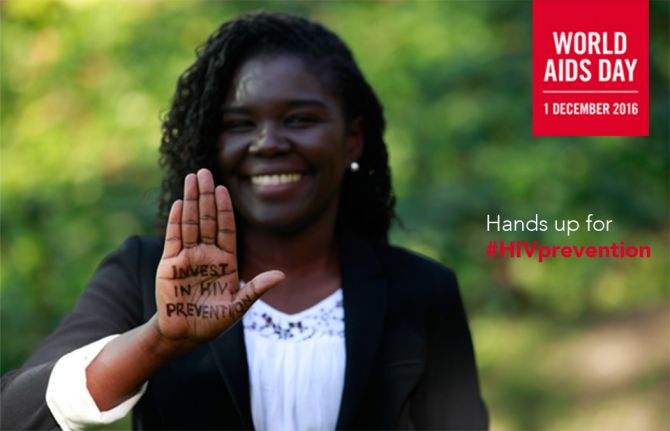
Feature Story
Closing the HIV prevention investment gap
28 November 2016
28 November 2016 28 November 2016Despite the progress made against HIV over the past 15 years and the availability of proven prevention and treatment methods, the annual number of new HIV infections among adults has remained static, at an estimated 1.9 million a year since 2010. Moreover, there has been resurgence of new HIV infections among key populations in some parts of the world.
Inadequate investments in prevention and unfocused investments that do not reach the most affected populations and locations are among the reasons for the prevention gap. An analysis of four countries in different regions and with different types of epidemic found that the funding of effective and focused primary HIV prevention programmes was low—6% of total HIV investments in Brazil, 4% in Cameroon, 15% in Myanmar and 10% in South Africa. Country allocations for HIV primary prevention (excluding mother-to-child transmission of HIV and voluntary HIV testing and counselling) by the United States President’s Emergency Plan for AIDS Relief and the Global Fund to Fight AIDS, Tuberculosis and Malaria have accounted for roughly 15% of total HIV expenditure.
With funding for prevention falling behind funding for treatment, fewer than one in five people at higher risk of HIV infection today have access to prevention programmes. UNAIDS modelling has shown that investing around a quarter of all the resources required for the AIDS response in HIV prevention services would be sufficient to make possible a range of prevention programmes, including condom programmes, pre-exposure prophylaxis, voluntary medical male circumcision, harm reduction, programmes to empower young women and girls, and mobilizing and providing essential service packages for and with key populations.
Investing more in prevention will also support treatment programmes to achieve their targets. Prevention programmes—including providing HIV information, condom distribution and outreach to young people and key populations—are often the first entry point for individuals to HIV testing and treatment. Community peer-led prevention programmes are also critical for reducing stigma and discrimination. Meanwhile, expanded access to treatment gives people at higher risk choices and encourages them to find out their HIV status; this, in turn, provides the opportunity to retain people who test negative in ongoing prevention programmes. Reducing the number of people who acquire HIV and will need treatment makes antiretroviral therapy programmes more sustainable.
In December 2015, the UNAIDS Executive Director, Michel Sidibé, called for investing a quarter for HIV prevention. In June 2016, United Nations Member States committed in the 2016 Political Declaration on Ending AIDS to ensuring that financial resources for prevention are adequate and constitute no less than a quarter of AIDS spending globally on average.
A number of countries have already taken action to increase their domestic funding for HIV prevention, including Namibia, which has committed to investing 30% of its HIV budget in preventing HIV among adults and children.
Hands up for #HIVprevention — World AIDS Day campaign
Publications

Press Release
UNAIDS and StarTimes join to promote World AIDS Day messages
30 November 2016 30 November 2016StarTimes—the UNAIDS media partner—broadcasts HIV prevention message across African network
GENEVA, 1 December 2016—UNAIDS and media partner StarTimes are working together to reach millions of people with World AIDS Day messages on the theme of HIV prevention. UNAIDS has produced two short videos that promote the life-cycle approach to HIV prevention—finding HIV solutions for everyone, at every stage of life. StarTimes will broadcast the videos across their African networks in English and French from today until the end of the year.
StarTimes is a major digital television operator licensed to broadcast in 30 countries across Africa. No one should be left behind by the AIDS response. Promoting HIV prevention options alongside HIV testing and treatment can ensure that the world will get on the Fast-Track to end the AIDS epidemic as a public health threat by 2030.
The videos can be viewed on UNAIDS YouTube channel at the following links:
UNAIDS
The Joint United Nations Programme on HIV/AIDS (UNAIDS) leads and inspires the world to achieve its shared vision of zero new HIV infections, zero discrimination and zero AIDS-related deaths. UNAIDS unites the efforts of 11 UN organizations—UNHCR, UNICEF, WFP, UNDP, UNFPA, UNODC, UN Women, ILO, UNESCO, WHO and the World Bank—and works closely with global and national partners towards ending the AIDS epidemic by 2030 as part of the Sustainable Development Goals. Learn more at unaids.org and connect with us on Facebook, Twitter, Instagram and YouTube.
StarTimes
StarTimes is the leading digital-TV operator in Africa, serving nearly 10 million subscribers and covering 90% of the continent's population with a massive distribution network of 200 brand halls, 3,000 convenience stores and 5,000 distributors. StarTimes owns a featured content platform, with 440 authorized channels consisting of news, movies, series, sports, entertainment, children's programs, fashion, religion etc. The company's vision is "To enable every African family to afford and enjoy digital TV" StarTimes achieves this by combining satellite and terrestrial DTV systems to provide an open and secure digital wireless platform. The company provides a robust signal transmission service for public and private broadcasters, offers consumers outstanding Pay-TV programs, mobile multimedia, wireless Internet connectivity and convenient online services including checking TV guide; watching free live football; chatting with celebrities and friends.
Contact
UNAIDS GenevaAlasdair Reid
tel. +41 22 791 1352
reida@unaids.org
StarTimes Beijing
Raissa Girondin
tel. +861053012241
raissagi@startimes.com.cn
Press centre
Download the printable version (PDF)


Feature Story
Viet Nam opens its first opioid substitution therapy service for prisoners
25 November 2016
25 November 2016 25 November 2016“In 2010, I participated in a study visit to learn about prison-based methadone programmes in Spain. Witnessing the positive impacts of the programme on prisoners as individuals and prisons as a whole, I reported the results and recommendations of the visit to the Ministry of Public Security,” said Nguyen Xuan Truong, Chief Prison Officer at Phu Son Prison. “It has been quite a wait since then, but I am happy that Phu Son is the first prison in Viet Nam to provide methadone services for prisoners.”
The launch of the pilot opioid substitution therapy service in Phu Son Prison marks a significant milestone in the efforts of the United Nations Office on Drugs and Crime (UNODC) and the Government of Viet Nam for HIV prevention, treatment and care in Viet Nam’s prisons.
“Since 2009, the United Nations Office on Drugs and Crime has worked with the Government of Viet Nam to provide opioid substitution therapy as part of a comprehensive HIV service package for people who are living and working in prisons,” said Christopher Batt, UNODC Officer-in-Charge.
Opioid substitution therapy is an evidence-informed service for opioid dependence. It reduces opioid use by eliminating withdrawal symptoms and drug craving, decreasing the risk of the transmission of HIV or other bloodborne infections and criminal behaviour. In addition, it integrates the patient into a continuum of care during and after his or her stay in prison.
“The opioid substitution therapy service unit is expected to enhance the quality of life of prisoners, reducing transmission of HIV and other diseases and decreasing the rate of relapse and overdose in prison settings,” Mr Batt added.
The Viet Nam Ministry of Public Security estimates that three out of 10 prisoners use drugs.
Prisoners are at higher risk of becoming infected with HIV or other bloodborne infections, including viral hepatitis B or C, relapse or overdose if their treatment needs are not met.
A second opioid substitution therapy service unit will soon be launched in Thanh Xuan Prison, and there are plans for the service to expand to other prisons.
Hands up for #HIVprevention — World AIDS Day campaign
Region/country

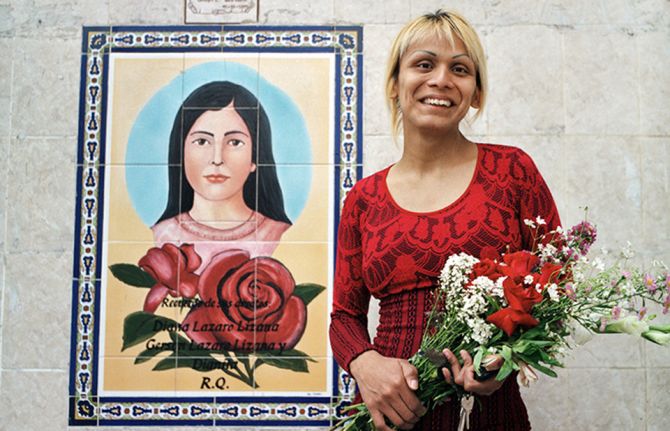
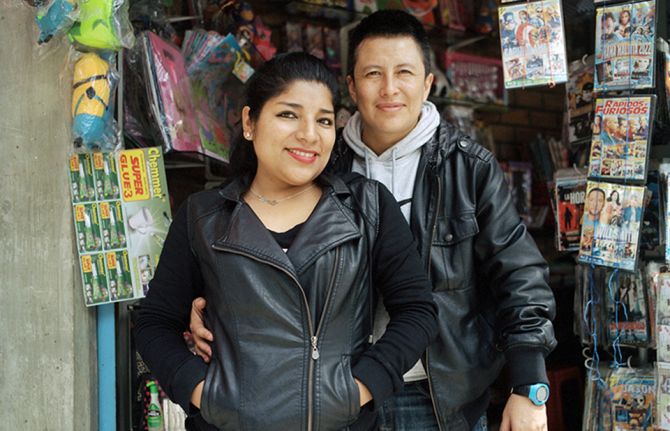

Update
Preventing HIV among transgender women in Lima
24 November 2016
24 November 2016 24 November 2016Transgender women face significant barriers that limit their access to health services and/or increase their vulnerability to HIV: stigma and discrimination, gender-based violence and gender inequities. As a result, the percentage of transgender women reached with HIV prevention and treatment services is very low.
To address the HIV prevention gap for transgender people, the Peruvian Ministry of Health organized a national consultation on combination HIV prevention in 2014 in partnership with Cayetano Heredia University and UNAIDS. This consultation opened a dialogue between stakeholders and community leaders on the future of HIV prevention in Peru. During the consultation, the Ministry of Health expressed its commitment to improve HIV combination prevention programming for transgender women. In 2015, it launched a targeted strategic plan for prevention and comprehensive care for HIV and other sexually transmitted infections (STIs) for transgender women .
The plan addresses the leading causes of the HIV epidemic among transgender women in Peru, including their poor socioeconomic conditions, their difficult living and working environments and the low accessibility of health services. In the plan, consideration is given to identifying effective strategies to respond to specific legal and human rights challenges, stigma and violence. The development of the plan was the result of a decade-long process of evidence generation, policy dialogue and capacity-building with the transgender community.
The plan is being translated into practice. Activities already implemented include special trainings of health personnel at STI treatment centres and community peer educators in how to address the HIV needs of transgender people, the provision of prevention services, including condoms and lubricants, HIV testing and linkage to health services for antiretroviral therapy and awareness-raising of local law enforcement personnel on the respect of human rights and prevention of gender-based violence for the transgender community.
Mao, a transgender women activist and peer educator of the Ministry of Health, said, “The focused plan is bringing services closer to the community. Some transgender women who could not go to the sexually transmitted infection treatment centres are now asking for condoms and testing, for information and for comprehensive health services. We are proud of being part of this initiative.”
The next phase of the transgender health plan will include an increase in the number of decentralized prevention and treatment service sites and a demonstration study on pre-exposure prophylaxis. The plan will be incorporated into and aligned with the national HIV programme.
Hands up for #HIVprevention — World AIDS Day campaign
Region/country

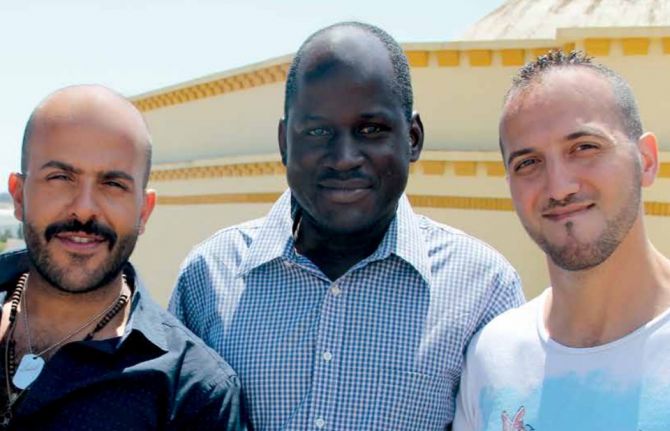
Feature Story
Implementing comprehensive HIV and STI programmes with men who have sex with men in Kyrgyzstan
23 November 2016
23 November 2016 23 November 2016In August 2016, the United Nations Population Fund (UNFPA), the Eurasian Coalition on Male Health and Kyrgyz community organizations and civil society partners organized the first ever training on the new guidance on implementing comprehensive HIV and sexually transmitted infection (STI) programmes with gay men and other men who have sex with men in Bishkek, Kyrgyzstan.
The new guidance is the basis of programming for gay men and other men who have sex with men. It was developed through a consultative process led by UNFPA, other United Nations organizations and the Global Forum on MSM and HIV.
Working on HIV and STI prevention, treatment, care and support is deeply challenging in much of eastern Europe and central Asia. Gay men and other men who have sex with men are subjected to considerable harassment, violence, stigma and discrimination. Most men who have sex with men are socially and culturally forced to marry women and face social exclusion and family rejection if they choose to be open about their sexuality. Sex between men is clandestine and opportunities to meet, socialize and love are limited. Empowering all men who have sex with men to live with dignity, free from violence and with affordable and accessible HIV and STI prevention and treatment services is at the heart of the guidance.
The two-day training of trainers in Bishkek brought together members of civil society keen to work on rolling out the guidance—it included a general overview of the document as well as detailed presentations on each of the six chapters. The participants discussed the existing country situation and how programmes focusing on men who have sex with men and contributions to future advocacy actions could be improved.
Thanks to the hard work of the training organizers and the dedication and enthusiasm of the training participants, the Bishkek training was an overwhelming success. The materials and methods used during the training will form the basis for the development of a new training module. The training module, along with the guidance document itself, will be rolled out in countries and its recommendations will be taken into account in the development and implementation of HIV programmes focusing on men who have sex with men across the region.
Hands up for #HIVprevention — World AIDS Day campaign
Region/country

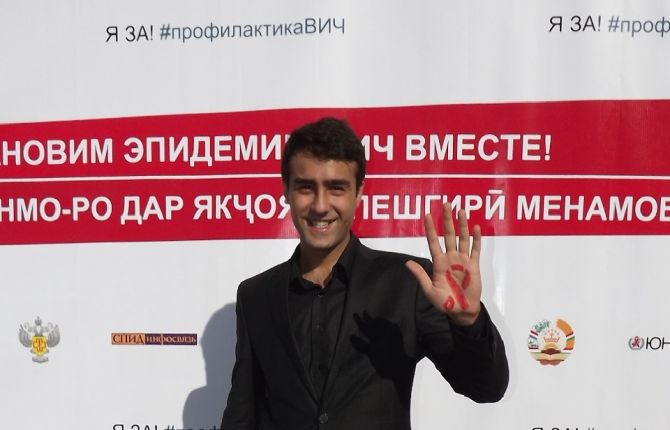
Update
Tajikistan joins “Hands up for #HIVprevention”
24 November 2016
24 November 2016 24 November 2016The Minister of Health of Tajikistan, Nusratullo Salimzoda, called for people to know their HIV status during the first ever public event on HIV prevention in Dushanbe, Tajikistan, on 15 November.
The event, in support of the “Hands up for #HIVprevention” campaign, united more than 500 representatives of the Government of Tajikistan, health professionals, celebrities and young people. Organized at the newly opened city medical centre, the campaign offers local citizens access to free and voluntary rapid HIV tests, access to condoms, information on how to protect against HIV infection and referrals to treatment and support for people living with HIV.
During the event, a new mobile diagnostic complex was donated to the Government of Tajikistan by the Russian Government under the framework of the Regional Cooperation Programme—a joint project of UNAIDS, AIDS Infoshare, and Rospotrebnadzor. The medical centre will operate in remote mountainous and rural areas in Tajikistan and will provide population at higher risk of HIV infection, including migrants and their families, with access to integrated HIV testing and counselling and other forms of medical diagnostics and treatment.
UNAIDS estimates that there were 1000 new HIV infections and that 16 000 people were living with HIV in Tajikistan in 2015.
Quotes
“We call on everyone to get tested for HIV and know their HIV status.”
“Tajikistan has supported new ambitious targets to end the AIDS epidemic by 2030. Yet, we can only reach those targets if people at higher risk of HIV infection, including migrants, know their HIV status and have access to critical HIV services.”
“The Russian Federation works actively with other countries in eastern Europe and central Asia in the field of HIV prevention, control and surveillance within the framework of the Regional Cooperation Programme. Thanks to this programme, the Ministry of Health of Tajikistan has strengthened its capacity to address the complex medical and social problems of HIV, hepatitis and other infectious diseases.”
“It is time to start speaking openly in Tajikistan about the importance of HIV prevention. Every young man and woman who is sexually active should know their HIV status. We must do everything to prevent exclusion of and discrimination against people living with HIV.”
Hands up for #HIVprevention — World AIDS Day campaign
Region/country

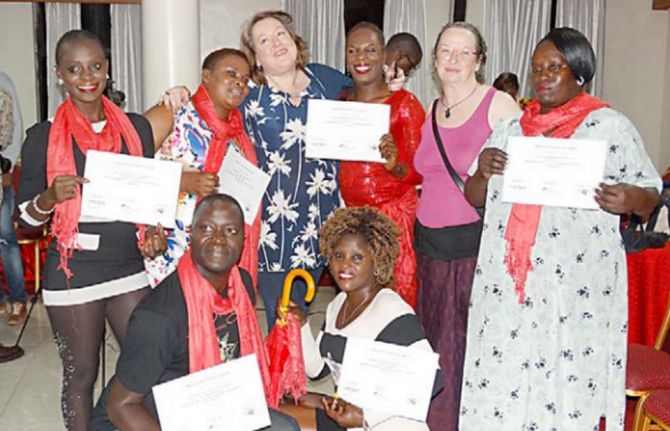
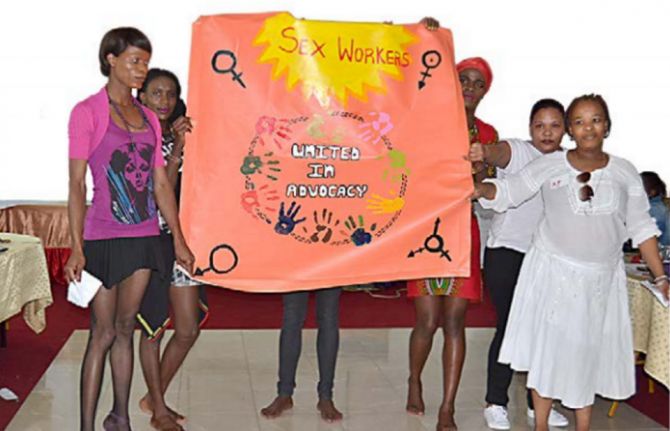
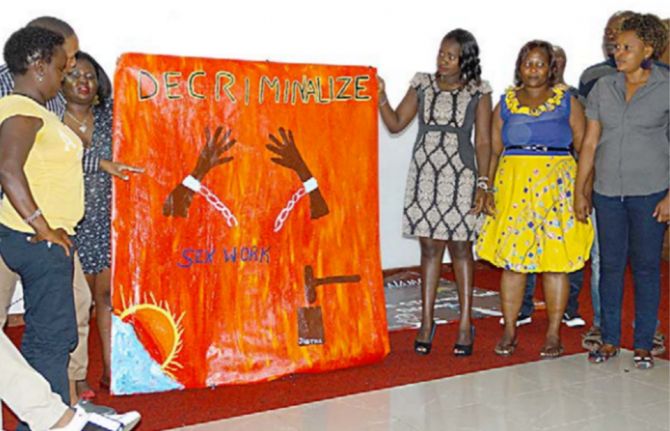
Feature Story
Sex Workers Academy Africa: increasing demand for rights-based HIV prevention services
21 November 2016
21 November 2016 21 November 2016The Sex Worker Academy Africa is a ground-breaking learning programme that aims to strengthen the rights of sex workers across 47 countries in Africa. It focuses on rapidly scaling up sex worker-led responses to HIV, increasing demand for and access to high-quality rights-based HIV prevention and treatment services for female, male and transgender sex workers and increasing HIV testing, leading ultimately to a fall in new HIV infections among sex workers.
The academy’s curriculum is based on the Sex Worker Implementation Tool. Developed by UNAIDS and partners in 2013, the tool outlines recommendations for the prevention and treatment of HIV and other sexually transmitted infections among sex workers in low- and middle-income countries.
Launched in 2015 and since held several times a year, the academy brings together sex workers from across the continent to explore issues such as community empowerment, addressing violence against sex workers, condom and lubricant programming, community-led services and capacity-building. The curriculum includes knowledge-sharing, art and dance advocacy projects, site visits, thematic workshops and feedback sessions. Each academy lasts a week and includes up to 18 participants.
Since its launch, more than 130 sex workers from 17 African countries have graduated from the academy. It has enabled sex workers from Namibia, the United Republic of Tanzania, Zambia and Zimbabwe to form their own national sex worker networks. In addition, sex workers from Lesotho and Swaziland have organized grass-roots organizations for sex workers where previously none had existed.
The academy is an African Sex Workers Alliance initiative implemented by the Kenya Sex Workers Alliance in Nairobi, Kenya. The curriculum was developed in cooperation with the Ashodaya Academy and the VAMP Institute in India, the Asia Pacific Network of Sex Workers and the Global Network of Sex Workers.
Initial funding for the development of the academy was provided by the United Nations Population Fund and the Dutch-funded nongovernmental organization Bridging the Gaps. Bridging the Gaps and the Robert Carr Fund have provided funding for the ongoing implementation of the academy’s work.
HANDS UP FOR #HIVPREVENTION — WORLD AIDS DAY CAMPAIGN


Feature Story
HIV prevention among key populations
22 November 2016
22 November 2016 22 November 2016Since 2010, the annual global number of new HIV infections among adults (15 years and older) has remained static, at an estimated 1.9 million. Members of key populations, including sex workers, people who inject drugs, transgender people, prisoners and gay men and other men who have sex with men, and their sexual partners accounted for 45% of all new HIV infections in 2015.
In some countries and regions, infection rates among key populations are extremely high—HIV prevalence among sex workers varies between 50% and 70% in several countries in southern Africa. One study from Zimbabwe found HIV prevalence rates of 27% for male inmates, 39% for female inmates and 60% for sex workers, with 9.6% of these getting newly infected between 2009-2014. New infections among gay men and other men who have sex with men have been increasing in all regions in recent years. Across countries, key populations are between 10 and 50 times in greater risk of HIV infection compared to other adults.
Criminalization and stigmatization of same-sex relationships, sex work and drug possession and use, and discrimination, including in the health sector, are preventing key populations from accessing HIV prevention services. Effective government support and community-based and implemented HIV prevention and treatment programmes that provide tailored services for each group are currently too few and too small to result in a significant reduction in new infections.
In order to achieve the target of reducing new HIV infections among key populations by 75% by 2020, a large-scale increase of programmes and the creation of an enabling social and legal environment are needed.
We must reduce new HIV infections among key populations
The global number of new HIV infections among adults has remained static, at an estimated 1.9 million, since 2010, threatening further progress towards the end of the AIDS epidemic.
New HIV infections among gay men and other men who have sex with men are rising globally, and there has been no apparent reductions of new infections among sex workers, transgender people, people who use drugs or prisoners. Studies conducted in southern Africa have found HIV prevalence 10–20 times higher among sex workers than among adults in the general population, with rates of HIV infection reaching 50% of all sex workers tested, and HIV prevalence reaching 86% in one study in Zimbabwe. A synthesis of studies including more than 11 000 transgender people worldwide estimates HIV prevalence to be 19.1%.
Key populations remain among the most vulnerable to HIV. Analysis of the data available to UNAIDS suggests that more than 90% of new HIV infections in central Asia, Europe, North America, the Middle East and North Africa in 2014 were among people from key populations and their sexual partners, who accounted for 45% of new HIV infections worldwide in 2015.
Reinvigorating HIV prevention among key populations requires domestic and international investments to provide key populations with tools, such as condoms and lubricants, pre-exposure prophylaxis and sterile needles and syringes, and testing and treatment. However, the design and delivery of such HIV combination prevention services is often limited by a reluctance to invest in the health of key populations and to reach out to them.
In many countries, key populations are pushed to the fringes of society by stigma and the criminalization of same-sex relationships, drug use and sex work. Marginalization, including discrimination in the health sector, limits access to effective HIV services. There is an urgent need to ensure that key populations are fully included in AIDS responses and that services are made available to them.
Guidelines and tools have been developed for and with the participation of key populations in order to strengthen community empowerment and improve the delivery of combination prevention services by community-led civil society organizations, governments and development partners.
The available evidence shows that when services are made available within an environment free of stigma and discrimination and involving key population communities, new HIV infections have declined significantly. For example, street youth in St Petersburg had a 73% decrease in HIV seroprevalence from 2006 to 2012, primarily due to decreased initiation of injection drug use. This marked reduction in the HIV epidemic among street youth occurred after implementation of extensive support programs and socio-economic improvements.
The replication of such successes and the scale-up of combination prevention programmes in all cities and sites where key populations live and work, implemented by countries and community organization networks, will help prevention efforts get back on track to achieving the target of reducing new HIV infections by 75% by 2020.
Quotes
“WHAT MATTERS IS THE LACK OF INCLUSION AND WIDESPREAD DISCRIMINATION. IT IS CLEAR THAT WE CANNOT END THE AIDS EPIDEMIC WITHOUT TAKING CARE OF THE NEEDS OF KEY POPULATIONS.”

